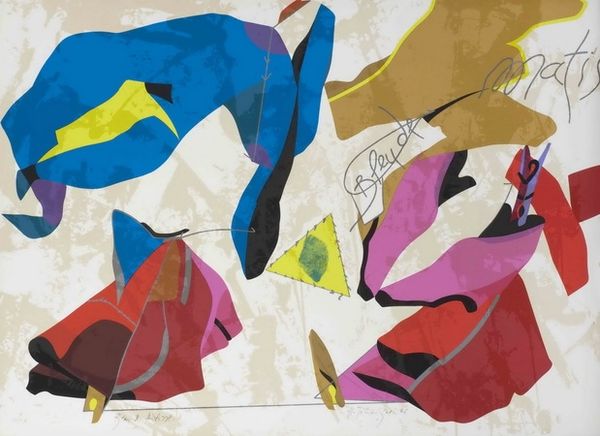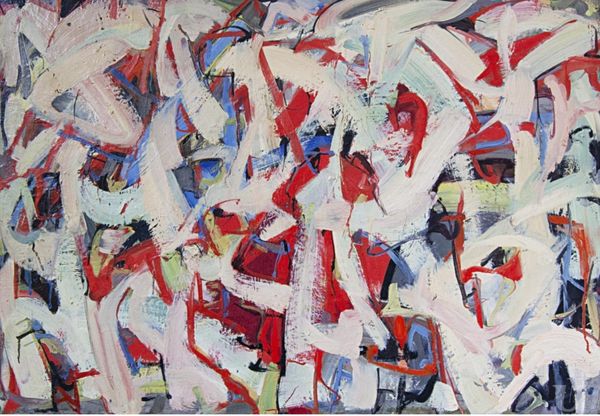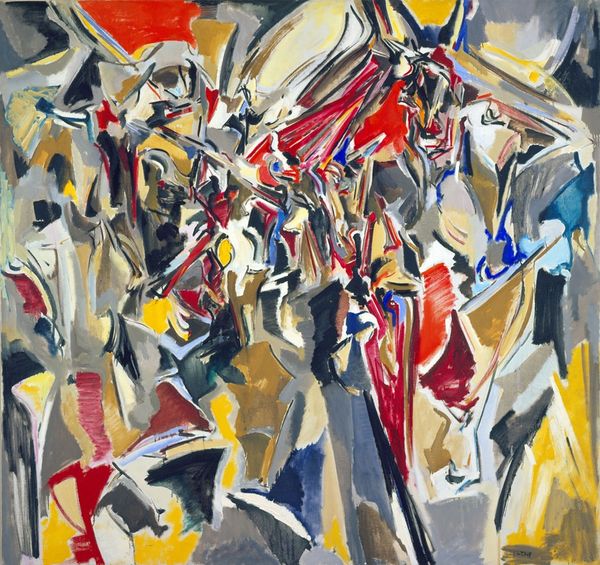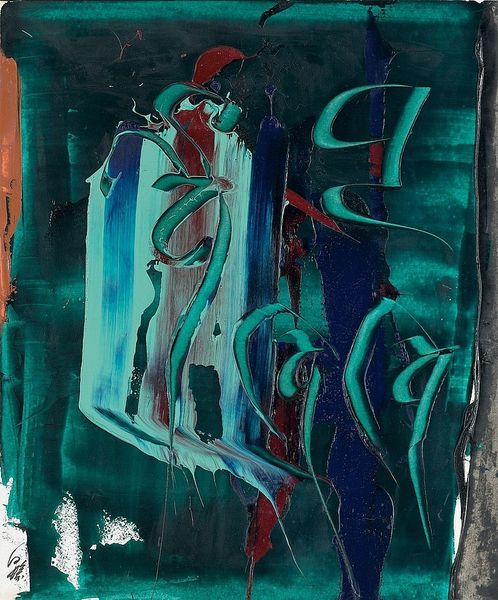
Study for ‘Sappers at Work: A Canadian Tunnelling Company, Hill 60, St Eloi’ c. 1918 - 1919
0:00
0:00
Dimensions: support: 3042 x 2438 mm frame: 2513 x 3113 x 75 mm
Copyright: © Tate | CC-BY-NC-ND 4.0 DEED, Photo: Tate
Curator: Here we have David Bomberg's study for 'Sappers at Work: A Canadian Tunnelling Company, Hill 60, St Eloi,’ a large, arresting canvas full of blue and white geometry. Editor: It hits you, doesn’t it? A fractured space, bodies in the gears of something awful. I feel claustrophobia looking at it. Curator: Indeed. Bomberg sought to capture the intense, disorienting experience of the First World War. He was commissioned to create a painting depicting the Canadian sappers. Editor: It’s more than a depiction; it's an evocation. The angular forms, the pale figures almost dissolving into the harsh light. It's like a machine chewing them up, or a mine collapsing. I can almost taste the dust. Curator: Bomberg, after his service in the war, moved away from the Vorticist style. But you can see the roots of that influence here. Editor: It’s a powerful study, raw and visceral. Bomberg really makes you feel the brutal nature of war. It certainly affected my understanding of it all. Curator: Absolutely.
Comments
tate 6 months ago
⋮
http://www.tate.org.uk/art/artworks/bomberg-study-for-sappers-at-work-a-canadian-tunnelling-company-hill-60-st-eloi-t00319
Join the conversation
Join millions of artists and users on Artera today and experience the ultimate creative platform.
tate 6 months ago
⋮
Bomberg’s painting commemorates an incident in the First World War, in which a company of Canadian soldiers dug tunnels under the German trenches to lay explosives. The operation was in preparation for a surprise assault on the enemy defences at Ypres. This work was a preliminary study for a painting commissioned by the Canadian Government for a War Memorial exhibition. It was criticised at the time as a ‘Futurist abortion’, although Bomberg had compromised the radical abstraction of his earlier Vorticist work for a more representational style. Gallery label, July 2007













